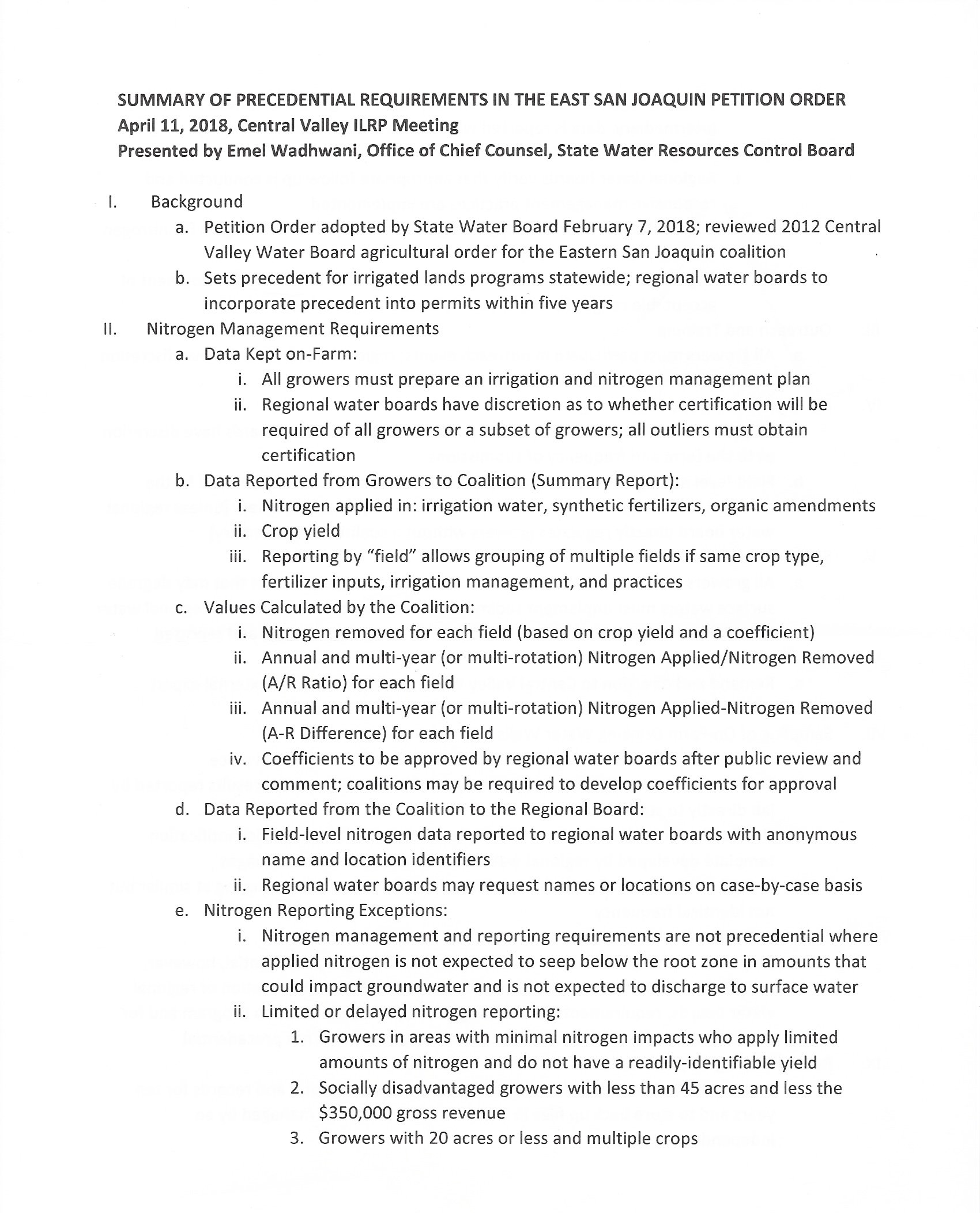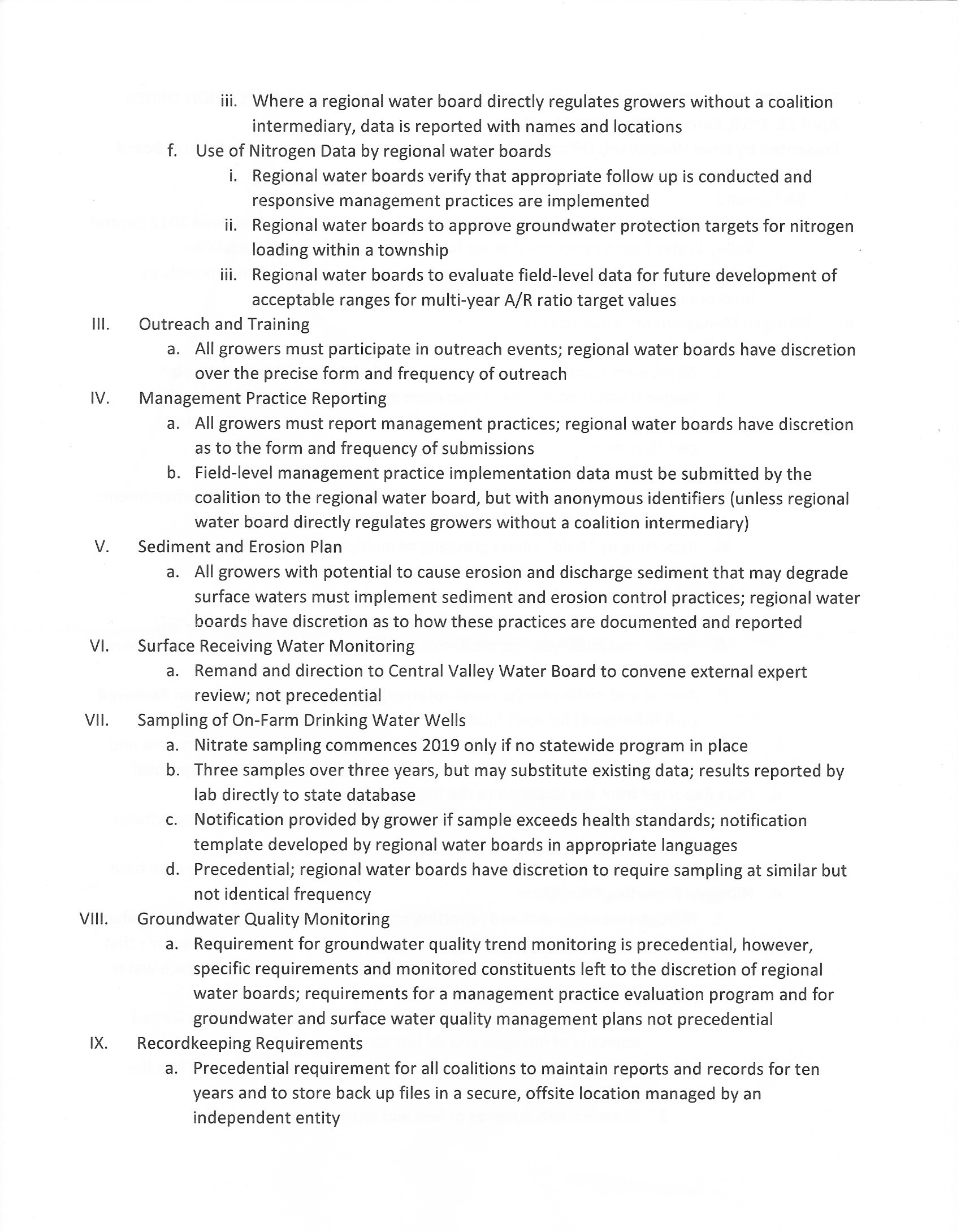“The dust has settled a little bit,” said Emel Wadhwani, senior staff counsel for the State Water Board.
She was in Modesto meeting with stakeholders from around the state, including heads of water quality coalitions from around the Central Valley, who represent the coalitions that serve growers, advocate for them with the state, and track their nitrogen use.
Wadhwani’s mission: to clearly lay out the requirements of the newly-revised Irrigated Lands Regulatory Program that will apply statewide, and not just in the Eastern San Joaquin.
It was no easy task to sum it all up, given that the order providing the changes was 80 pages long with 300 pages of attachments.
For starters, Wadhwani said, all growers will need to do nitrogen and irrigation management plans.
“It must have an irrigation component,” Wadhwani said, but she added that regional boards will have discretion on how the reports are certified, and the reports will stay on the farms where they are written.
“All this reporting is field-specific, at a field level,” she said.
Multiple fields can be grouped together, though, as long as growers use similar practices across the fields and the group of fields doesn’t exceed 640 acres.
One big question about the new rules is about what happens when a grower doesn’t perform well in using nitrogen---growers will be assessed with a formula of A/Y, which means applied nitrogen divided by yield amount.
The number will be a rolling number averaged over 3-year periods, so one bad year won’t single out a grower.
But then, those who still standout as unusually inefficient with nitrogen, called “outliers” will get tips and communication from their water quality coalition.
The question of how to define outliers--the length of time, or percent of growers--is not settled, Wadhwani said, and the water quality coalitions will get to propose how it should be defined.
“The board was appreciative of collaboration between coalitions and environmental justice groups to move forward,” Wadhwani said.
The work continues to move forward, as the likely changes become more clear.
To see Wadhwani’s summary of the changes, click on this link, or open the images below in a new tab and expand it.
For information on how aerial imaging can detect water stress in almonds, see this post.

